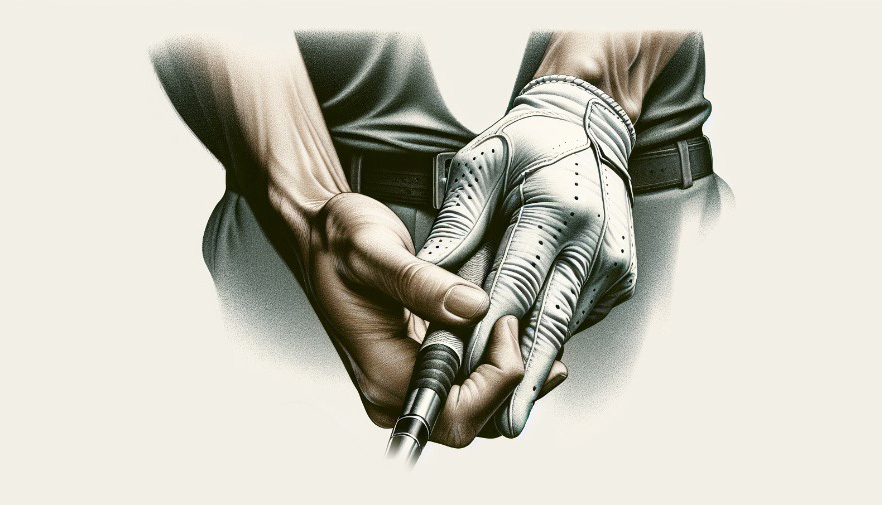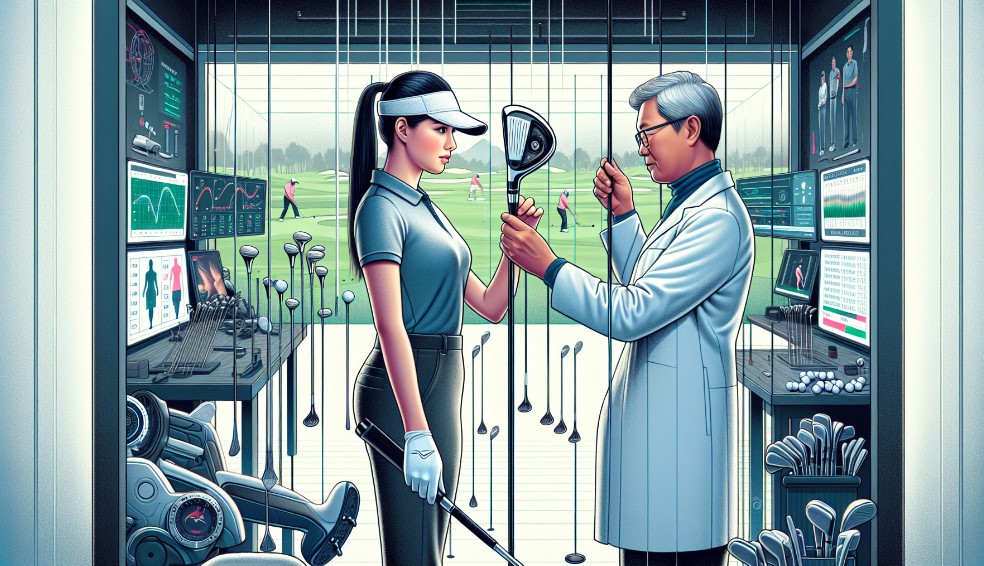How to Hit a Golf Ball Farther: Maximizing Your Distance
Achieving extra distance on your drives doesn’t have to be a mystery. This guide breaks down how to hit a golf ball farther by honing your swing mechanics, building core strength, and choosing the right gear. Step onto the course with confidence knowing you have the essentials to drive the ball farther.
Related article: Best Distance Golf Balls
Key Takeaways: How To Hit a Golf Ball Farther
- Strengthen your golf swing fundamentals—focus on grip, stance, and alignment to achieve consistent performance and greater driving distance.
- Boost clubhead speed through improved swing tempo, weight transfer, and creating lag; this will directly translate into hitting the ball farther.
- Customize your equipment to your personal swing characteristics, including club fitting and golf ball selection, to maximize driving distance efficiently.
Fundamentals: How To Hit a Golf Ball Farther

In golf, tiny details can radically influence your performance. A strong foundation in the basics is the secret to a powerful and consistent golf swing. Start by improving your grip, stance, and alignment – these aspects form the base for increasing your driving distance and are essential golf tips.
Grip
A good grip is about more than just holding the golf club firmly. It’s about controlling the club primarily with the upper hand providing the guidance and stability, and the lower hand providing the power. Grip strength is also an important factor when it comes to distance, as well as accuracy, too tight can lead to a hook and too loose can lead to a slice.
A well-maintained grip keeps your swing in check, preventing tension in the arms and reducing lag, both of which can decrease the distance of your golf shot.
Stance
Imagine your body as a launchpad from which the golf ball will take flight. An athletic golf stance, achieved by bending from the waist with a straight spine and slightly flexed knees, is your secret weapon for full shots and hitting the ball straight.
Remember, the width of your stance should vary depending on the club you’re using, with driver stances being the widest and wedge stances the narrowest.
Alignment
Alignment is the compass that guides your golf ball towards your intended target. It’s about setting your clubface to match the intended target line, with your body positioned parallel to this line. A slight misalignment at impact can lead to significant deviations in ball flight from the intended target, so precision is key.
Enhance Clubhead Speed

Clubhead speed acts as the propelling force for your golf ball. Enhancing this speed can significantly increase your driving distance. By working on body rotation and extending your backswing, you can see significant improvements in your clubhead speed.
Swing Tempo
Consider your swing tempo as the rhythm guiding your golf swing. Maintaining a smooth tempo is crucial for increasing clubhead speed and generating power. This might seem contradictory to hitting the ball farther, however, maintaining a smooth tempo is vital to hitting the ball further. It involves a light grip pressure and smooth acceleration of the clubhead from the top of the swing, resulting in greater clubhead speed at impact.
Weight Transfer
Weight transfer during a golf swing can be likened to a dance choreography. It requires shifting your weight from the center to the trail foot during the backswing and onto the lead foot in the transition. This rapid shift, initiated before the hands reach waist height on the downswing, boosts your impact and helps maintain effective lag, propelling the ball forward.
It is not just your arms that do the swinging, it starts with your legs and involves your whole body. Just like a knock out punch from a world champion boxer.
Creating Lag
Lag is the secret ingredient that spices up your golf swing. It’s the angle between your lead forearm and the club shaft during the downswing. To generate effective lag, focus on shifting pressure into your left foot, unwinding your hips and chest, and letting the club fall behind for a shallower approach.
Lag utilizes the flex of the golf club shaft to create greater club head speed without increasing the speed of your arms and hands during the swing. Optimizing the lag in your swing can be as simple as adjusting the flex of your shaft or choosing between a steel or graphite shaft.
Optimize Launch Angle and Ball Flight
Set for liftoff? The launch angle, the angle at which the ball departs from the clubface in relation to the ground, greatly influences the trajectory and distance of your ball.
Optimizing your launch angle can be achieved by adjusting your swing mechanics, altering ball position, and selecting the right club. If you are looking for more distance from the tee, you should consider the angle of your driver, drivers can vary between 8 degrees to 12 degrees. Finding the optimum angle for you and combining it with the right golf ball will increase your distance off the tee.
Ball Speed
Ball speed is the velocity at which the golf ball leaves the golf club after being struck. It is the biggest indicator of how far a golf ball will travel because it is the actual launch speed of the golf ball. Swing speed is the biggest indicator of ball speed, however, impact efficiency also determines how well the ball is launched. Utilize a specifically engineered distance ball such as a TaylorMade Distance+ that generate high ball speed.
Tee Height
Tee height can be a game-changer in your quest for increased launch angles and lower spin rates. By using a higher tee height, you can hit the ball higher on the clubface, enhancing the launch angle without unnecessarily increasing spin.
So, aim for ‘mid’ and ‘high’ tee heights, positioning half or the entire ball above the crown of the driver, respectively.
Club Selection
The right club is like a trusty steed, carrying your golf ball to the desired destination. Choose clubs that align with your regular shot distances and swing characteristics, ensuring the club head and club face are well-suited for your game. Higher lofted clubs, in particular, can help achieve higher launch angles.
Related article: Average Distances For Each Golf Club
Impact Position
The impact position is the sweet spot where your club meets the ball. The ideal point of contact on the ball with a driver is about a half inch above the center of gravity on the clubface. This utilizes the gear effect for maximum distance. Adjust your tee height to optimize your impact position.
Strengthen Your Core and Increase Flexibility

The role of your core muscles in your golf swing cannot be overstated. Building up your core strength can improve your:
- Swing posture
- Consistency
- Accuracy
- Power
Additionally, heightened flexibility facilitates a more comprehensive follow-through, boosting the power of your particular swing during the downswing. Professional golfers such as Tiger Woods and Bryson DeChambeau are known for being muscular golfers with long tee shots.
Core Exercises
Core-strengthening exercises can turn your body into a driving powerhouse. Exercises like ‘high plank’, ‘low plank’, and ‘Russian twists’ improve stability, strength, and balance, which are essential for an effective golf swing.
Flexibility Training
Flexibility training is the secret sauce to a more fluid golf swing. Practices like yoga or Pilates can improve flexibility, contributing to a more fluid and powerful golf swing. It is vital to have a long range of movement to enable a full golf swing. Shoulder stretches across your chest are one of the most effective stretches to increase your swing range.
Swing Drills
Swing drills are the bridge that connects your improved core strength and flexibility to your golf swing. An effective weight transfer drill can help you integrate these improvements into your swing for a more powerful and efficient motion.
Customizing Your Equipment

Maximizing your driving distance can be fast-tracked with custom-fitted golf clubs and a suitable golf ball selection. Tailoring shaft flex, shaft length, lie angle, and grip size to your swing characteristics during club fitting can significantly affect your ability to hit a golf ball farther.
Club Fitting
Professional club fitting is like getting a custom-tailored suit – it enhances performance and increases driving distance. A club fitter can fine-tune your driver’s launch angles and spin rates, essential factors for maximizing your driving distance.
Golf Ball Selection
Choosing the right golf ball can be as crucial as selecting the right club. Different golf balls have varying characteristics that can affect performance based on swing speed and ball speed. For example, higher compression balls benefit players with faster swing speeds, whereas low compression balls favor slower swing speeds.
Practice Makes Perfect
Consistent practice, as the old saying goes, makes perfect. Regular practice coupled with progress tracking can gradually improve your driving distance, helping you achieve more distance.
Training aids can also help overcome challenges of maintaining consistent body alignment, a key factor in swing development.
Driving Range Routine
A well-planned driving range routine serves as a roadmap to improving your distance. Starting with wedge shots and gradually progressing to the driver provides a comprehensive range session that may enhance your driving distance.
On-Course Strategy
Your on-course strategy is your game plan on the golf course. It involves strategically planning shots and managing the course with patience, resulting in fewer unnecessary strokes and an improved overall score. Develop a consistent warm up routine that works for you, making sure you start each round on the right foot.
Mental Game
A strong mental game is like the captain steering the ship. Golfers who adjust their expectations realistically and acknowledge their successes tend to build confidence, contributing to improved distance.
Summary
From mastering the fundamentals of grip, stance, and alignment, to choosing the right golf ball and club, every aspect of your game contributes to your ability to hit a golf ball farther. With continued practice, a strong mental game, and a commitment to improving core strength and flexibility, you can start seeing visible improvements in your driving distance.
A professional fitting will do wonders for your game, golf equipment plays a large role in how far you hit the golf ball. So, are you ready to take your golf game to new heights?
Frequently Asked Questions
What is the importance of a good grip in golf?
Having a good grip in golf is crucial as it enables you to effectively control the golf club, reducing tension in your arms and allowing for better shot distance and control. So, focus on improving your grip to enhance your golf game.
How does the stance affect my golf swing?
A strong, athletic golf stance will enhance the power and accuracy of your swing, so it’s important to adjust the width based on the club you’re using. Mastering your stance can significantly improve your golf game.
How can I increase my clubhead speed?
To increase your clubhead speed, focus on enhancing your body rotation and extending your backswing. Practice full-force swings regularly to further improve your speed. You’ll see progress over time as you dedicate yourself to these techniques.
What’s the role of core strength and flexibility in golf?
Having a strong core improves your swing posture, consistency, accuracy, and power, while flexibility allows for a more complete follow-through, amplifying the downswing’s power. Both are crucial for a great golf game!
How can professional club fitting improve my driving distance?
Professional club fitting can improve your driving distance by tailoring aspects such as shaft flex, shaft length, lie angle, and grip size to your swing characteristics, significantly enhancing your ability to hit the ball farther.

